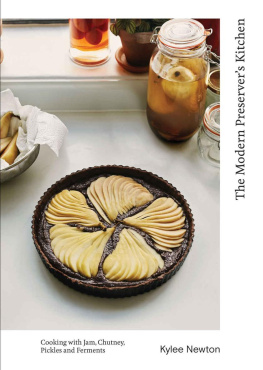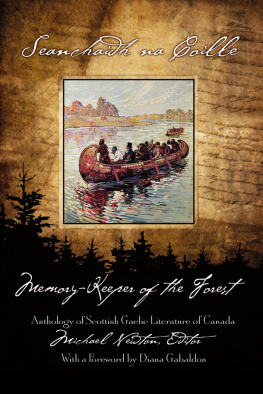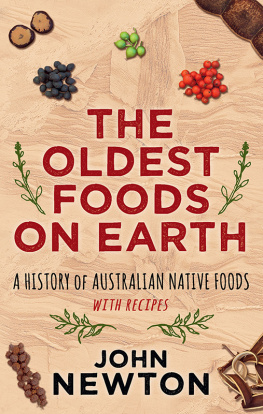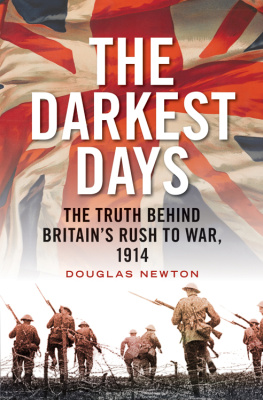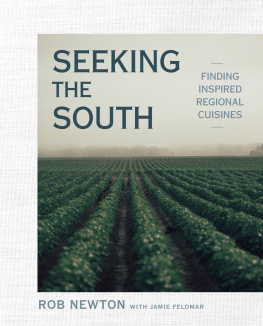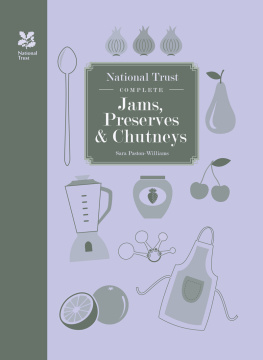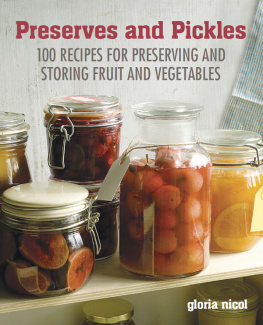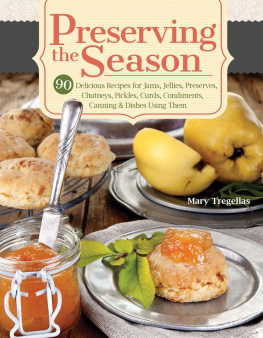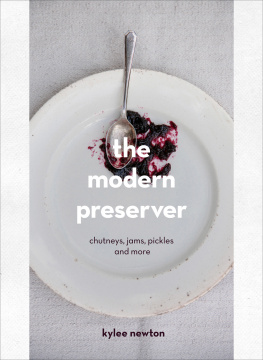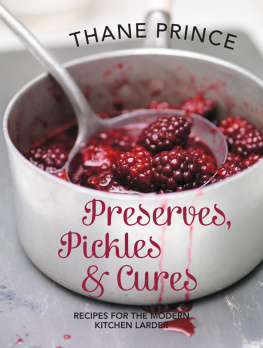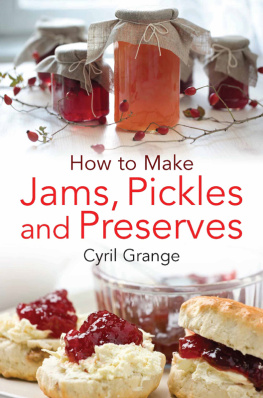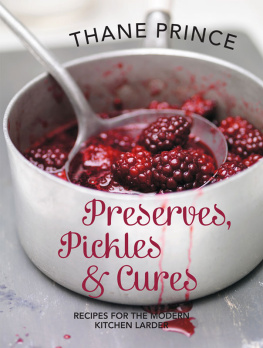

Contents

from one thing comes another
For the past ten years, exploring the many avenues of preserving has been my passion. I started by making chutney, which evolved into jams, pickles, ferments and drinks. In this book, I hope to take you on a similar journey, to share with you what I have learnt along the way and to inspire you to use what you make in your everyday cooking.
Nine years ago, I started a small, handmade preserving business in East London called Newton & Pott. Not only did I want to make delicious, small-batch preserves using excellent produce, but I also sought to show people the place that preserving has in our history, and to represent it within a modern context.
People have preserved food for thousands of years. You can see it in countless countries and cultures across the globe. Its been a means of feeding people in unfruitful times, and also sometimes relied upon for survival. Like all food, it brings people together: from the passing down of these culinary traditions comes community and identity.
For me, preserving is sustainable cooking at its best. It makes the most of each seasons offering, giving yield longevity and creating a type of edible time capsule. All of this is good for the planet, which is one of the main reasons Im so attracted to the process. Reducing waste and making the most of the seasons are at the heart of my moral compass, as pagan as that sounds
I grew up in New Zealand in the late 70s and 80s. From a young age, the idea of being a Tidy Kiwi was drummed into me, thanks to a government campaign to reduce litter. Watching Sesame Street, I learned about recycling by following the journey of a newspaper, from the delivery boy tossing a rolled-up issue of the days news onto a doorstep, which was duly read and discarded, before making its way to the paper factory where it was transformed into a new issue of the next days news. Fascinated, I begged for a paper-recycling kit that Christmas. These beginnings gave me an appreciation and respect for the planet that I still hold close.
I also grew up eating what was in season. I knew that if we couldnt get tomatoes, it wasnt summer. Coming from a small town on a small island at the bottom of the world, we didnt have access to mass imported produce from abroad. We ate what was grown and reared around us. My father was a fisherman, so his catch of the day was often on the table that evening.
Over the decades, we have become disconnected from the planet we have become accustomed to buying produce out of season; to ingredients grown for quantity, not quality; and to perfectly formed, unblemished fruit and vegetables, thanks to human interventions and industrial farming. The Earth is in an environmental crisis. This behaviour has depleted its ability to repair itself, and young people today seem to be better informed and aware of the dangers facing our world than past generations have been. They dont want to inherit a planet in tatters, but rather a healthy environment to pass on to their own children. We must all be accountable in our own lives and take responsibility for our lifestyle choices. This starts by switching to locally grown produce, taking an interest in where our food comes from and making better choices about how we buy it; it comes from making more things from scratch, creating less waste and using fewer resources.
Just a disclaimer here: I am far from perfect. Im neither vegan nor vegetarian. I have thrown food out if its going bad, and I sometimes find myself with single-use plastic in the house! I find myself in the supermarket when I dont want to make my own pasta or bread, if I want cheap alcohol, or cows milk or cream to bake with. But my husband and I make conscious, achievable steps to try to lower our carbon footprint.
Obviously, we preserve: the springs radishes become pickles, summertime peaches are made into jam to enable them to be eaten at any time of year. We make a stock list of what we have in the house and only buy essentials to top it up theres very little waste. We take reusable bags when we go shopping and refuse plastic bags when offered them. We buy from our local butcher and fishmonger, supporting local markets and producers. We compost our food scraps and wash out single-use plastic to use again. I even wash and dry my baking paper to make it last another day.
My intention with this book is to help you start this dialogue, with yourself and others, so you too can contribute to food sustainability, starting with what you eat every day by preserving whats in season and using these preserves or whats in your fridge as a base for making easy family meals.


How to use this book
How do I eat it? A question Ive heard countless times from customers of my market stall over the years. With this in mind, Ive been working on ideas that incorporate preserves into menus and meals for some time. In my first book, The Modern Preserver, I made suggestions for enjoying your newly made preserves beyond the parameters they are traditionally assigned on toast or in cheeseboards and so on. I want people to see each preserve not as one dimensional, but as something with vast possibilities. Ive made this my mission, collaborating with other cooks and chefs, running pop-ups and writing recipes to spread this idea.
If youve come this far, youve probably already made your own preserves, or just love preserves and collect many, but now may have the dilemma of surplus jars of things. You can only gift so many, and with modern fridges and freezers, we take our foods endurance for granted and let it sit, only to buy more. I call this the condiment ghost-town.
Every time you look in your fridge and you see a condiment ghost-town growing, you can refer to these recipes for fresh ideas. But also, when you bring home a new condiment and are at a loss for ideas on how to eat it, these pages should help.
This book is made up of sections dedicated to different types of preserves. Alongside each preserve recipe, Ive also included two to three recipes that use that preserve as an ingredient. The recipe combinations are suggestions and include notes for alternatives and they are open to interpretation if you want to experiment. Many of the recipes are influenced by the country where the preserve originates, but make no claim to authenticity.
One persons finely chopped is anothers roughly chopped, just as one persons centimetre can be anothers inch. But size really does matter when it comes to the way food breaks down when cooking, so do try to follow my instructions if you want the recipes to work as intended. The equipment you use is important, too: copper, steel or cast iron; little or large; gas or induction; even the weather on the day can affect your results, especially when making jam. The key is to practise and persevere.
When it comes to cooking, Im a big believer in trusting your senses. Recipes passed down through the oral tradition dont come with a set of measurements and instructions, more instincts and feelings. In my recipe, I quote my Auntie Cher talking about how her mother didnt have a recipe for her scones, as they were always made on look and feel. I dont just cook with my hands and eyes I also use my ears, nose and mouth. Let all of your senses guide you. Listen to the change in a sizzle or bubble; smell when the caramel has turned and burned; feel the heat that comes from a barbecue; and taste, taste, taste as you cook seasoning is subjective but essential.
Next page
